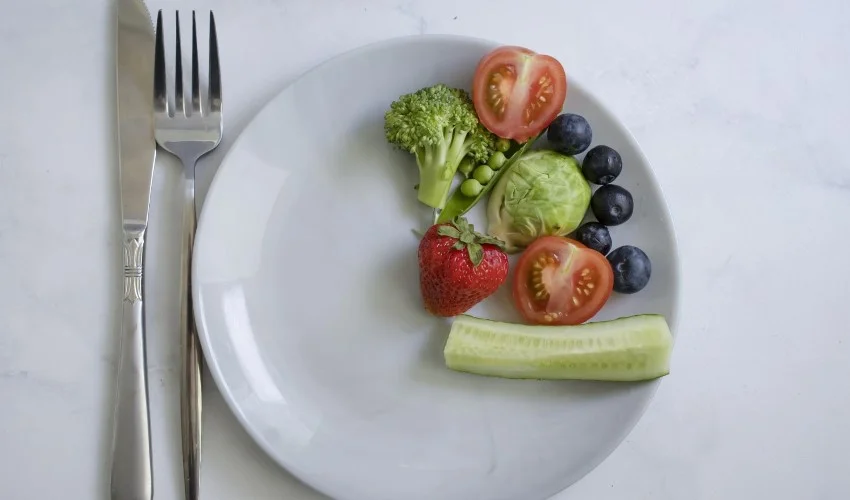Living with diabetes requires careful attention to one’s diet, particularly when it comes to snacking. Diabetic patients and their caregivers often face challenges in identifying healthy snack options that align with their dietary needs. The key to making informed choices lies in understanding food labels and deciphering the information they provide. In this article, we will delve into the importance of food labeling, explore key considerations for diabetes-friendly snacks, and provide practical tips for finding healthy options within food labels.
The Role of Food Labeling in Diabetes Management
Food labels play a vital role in helping individuals with diabetes make informed choices about the foods they consume. These labels provide essential information about the nutritional content of packaged snacks, allowing consumers to assess the suitability of a product for their dietary needs.
Food labels provide information about serving sizes, calories, total carbohydrates, sugars, dietary fiber, sodium, and unhealthy fats. By understanding these details, individuals can determine whether a snack aligns with their recommended daily nutrient intake.
Key information provided on food labels
Serving size: The serving size represents the amount of food typically consumed in one sitting. It helps individuals understand the nutritional content of a single portion and calculate their carbohydrate and calorie intake accurately.
Calories: The calorie content per serving indicates the amount of energy provided by the snack. Monitoring calorie intake is crucial for weight management and blood sugar control.
Total carbohydrates: This value represents the total amount of carbohydrates present in the snack. Since carbohydrates significantly impact blood sugar levels, individuals with diabetes need to be aware of their carbohydrate intake to manage their blood glucose effectively.
Sugars: The sugar content on food labels specifies the amount of natural and added sugars in the product. Diabetic patients should aim to limit their consumption of added sugars and choose snacks with minimal sugar content.
Dietary fiber: Fiber plays a vital role in diabetes management as it helps regulate blood sugar levels and promotes digestive health. Food labels provide information about the fiber content of snacks, allowing individuals to select options that contribute to their daily fiber intake.
Sodium: High sodium intake can lead to fluid retention and increased blood pressure, which is a concern for individuals with diabetes. Food labels help individuals identify snacks with lower sodium content and make healthier choices.
Unhealthy fats: Trans fats and saturated fats can contribute to heart disease and other health issues. Food labels can assist individuals in avoiding snacks that contain these unhealthy fats, thereby promoting heart health.
Impact of accurate food labeling on diabetes management
Accurate and clear food labeling can significantly impact the management of diabetes. By providing comprehensive information, labels help individuals regulate their blood sugar levels, control their intake of sugar and sodium, and choose snacks that contribute to a healthy lifestyle.
Identifying Diabetes-Friendly Snacks
When selecting snacks for individuals with diabetes, it is essential to consider specific nutritional requirements. These include balancing carbohydrates, proteins, and fats, controlling sugar and sodium intake, and incorporating dietary fiber.
Balancing carbohydrates, proteins, and fats
To maintain stable blood sugar levels, individuals with diabetes should opt for snacks that provide a balance of carbohydrates, proteins, and fats. Carbohydrates are the main nutrient that affects blood sugar levels, while proteins and fats can help slow down the absorption of carbohydrates and promote satiety.
Diabetic patients should aim for snacks that contain a moderate amount of carbohydrates, a small portion of healthy fats, and some protein. For example, a snack with whole grain crackers (carbohydrate source), a small amount of nut butter (healthy fat and protein source), and a few slices of lean turkey breast (protein source) can provide a balanced snack option.
Controlling sugar and sodium intake
High sugar intake can lead to spikes in blood sugar levels, while excessive sodium consumption may contribute to hypertension. When selecting snacks, diabetic patients should choose options with low sugar content and limited added sugars. It is important to read food labels carefully and look for snacks with minimal added sugars. Additionally, opting for low-sodium or no-added-salt snacks helps maintain healthy blood pressure.
Incorporating dietary fiber
Fiber plays a crucial role in diabetes management. It slows down the absorption of sugar, helps control blood glucose levels, and promotes digestive health. Snacks rich in dietary fiber can contribute to better blood sugar control and improved overall health. Opt for snacks that include fruits, vegetables, whole grains, nuts, and seeds, as they are excellent sources of fiber.
Recognizing common pitfalls in snack choices
When searching for diabetes-friendly snacks, it is important to be aware of potential pitfalls that can undermine healthy eating habits.
Hidden sugars and added sweeteners
Food manufacturers often use various names for added sugars, making it challenging to identify them on labels. Some common terms for added sugars include high fructose corn syrup, maltose, dextrose, and sucrose. Be mindful of these hidden sugars when choosing snacks and opt for options with minimal added sweeteners.
High sodium content
Many packaged snacks contain high amounts of sodium, often in the form of additives or preservatives. Excessive sodium intake can lead to fluid retention and increased blood pressure. Reading food labels helps identify snacks with lower sodium content, promoting heart health and blood pressure control.
Unhealthy fats and trans fats
Avoid snacks that contain trans fats and unhealthy saturated fats, as they can contribute to heart disease and other health issues. Instead, opt for snacks that contain healthy fats, such as those found in nuts, seeds, avocados, and olive oil. These fats can provide essential nutrients and promote heart health.
Decoding Food Labels for Diabetes-Friendly Snacks
Understanding serving sizes is crucial for accurate carbohydrate counting and managing blood sugar levels. Pay attention to portion sizes and calculate the corresponding nutritional values. This information helps determine the carbohydrate and calorie content per serving and aids in controlling blood sugar levels effectively.
Total carbohydrates and sugar content
Diabetic individuals need to monitor their carbohydrate intake as it directly affects blood sugar levels. Assess the total carbohydrates stated on the label and identify the sugar content separately. Differentiate between natural sugars (e.g., those found in fruits and dairy products) and added sugars.
Differentiating between natural and added sugars
Natural sugars are typically accompanied by beneficial nutrients and dietary fiber, making them a better choice for individuals with diabetes. Added sugars, on the other hand, provide empty calories and little nutritional value. Look for snacks that primarily contain natural sugars and limit snacks with high amounts of added sugars.
Recognizing alternative names for added sugars
Food labels may use various terms to indicate the presence of added sugars. Common examples include corn syrup, honey, molasses, agave nectar, and fruit juice concentrate. Familiarize yourself with these alternative names to make informed choices and select snacks with minimal added sugars.
Fiber and whole grains
Dietary fiber is beneficial for diabetes management as it aids in blood sugar control and promotes satiety. Check the label for the fiber content and choose snacks that are rich in fiber. Look for whole grain ingredients, as they provide additional fiber and essential nutrients. Snacks made with whole grain flours, oats, or bran can be excellent options.
Sodium and unhealthy fats
Individuals with diabetes often have an increased risk of heart disease and hypertension. Monitoring sodium levels is crucial for maintaining healthy blood pressure. Choose snacks with lower sodium content and limit those that contain high amounts of unhealthy fats. Opt for snacks that are low in trans fats and saturated fats, as these can contribute to heart health issues.
Practical Tips for Finding Diabetes-Friendly Snacks
Whole, unprocessed foods are typically the best options for diabetic individuals. These foods are naturally nutrient-dense and provide a range of essential vitamins, minerals, and dietary fiber. Incorporate fresh fruits and vegetables, nuts, seeds, legumes, and lean protein sources such as poultry, fish, and tofu into snacks to ensure a balance of nutrients.
Reviewing the ingredient list
The ingredient list provides valuable insights into the composition of a snack. Read the ingredient list carefully to identify hidden sources of added sugars, artificial additives, and preservatives. Select snacks with a shorter list of recognizable, whole food ingredients, as they tend to be healthier options.
Comparing different brands and products
Not all snacks are created equal, even within the same category. Take the time to compare different brands and products to find the ones that align with diabetes-friendly criteria. Utilize the nutritional information and values provided on food labels to make informed comparisons and select the most suitable options.
Looking for specific diabetes-friendly certifications or labels
Some food products carry specific certifications or labels indicating their suitability for diabetic individuals. These certifications may include low glycemic index (GI) or diabetic-friendly symbols. Look for these labels on snack packages to identify options that meet specific diabetes management requirements.
Utilizing Technology for Diabetes-Friendly Snacks
Various smartphone applications and online resources are available to assist individuals with diabetes in making healthy food choices. These applications can track nutritional information, provide healthy snack ideas, and offer diabetic-friendly recipes. Explore these tools to enhance snack selection and gain access to personalized guidance.
Barcode scanning and product analysis
Barcode scanning apps allow users to scan the barcodes on food products and receive instant analysis of their nutritional content. These apps can help identify diabetes-friendly snacks, highlight potential allergens, and provide personalized recommendations. Utilize barcode scanning technology to simplify the process of finding suitable snacks.
Making informed choices about diabetes-friendly snacks is crucial for the well-being and quality of life of diabetic patients. By understanding the information provided on food labels, individuals with diabetes and their caregivers can navigate the snack aisle more effectively. This article has explored the importance of food labeling, outlined key considerations for diabetes-friendly snacks, and provided practical tips for finding healthy options. By empowering individuals with knowledge, we can help them make better snack choices and improve their overall diabetes management.




